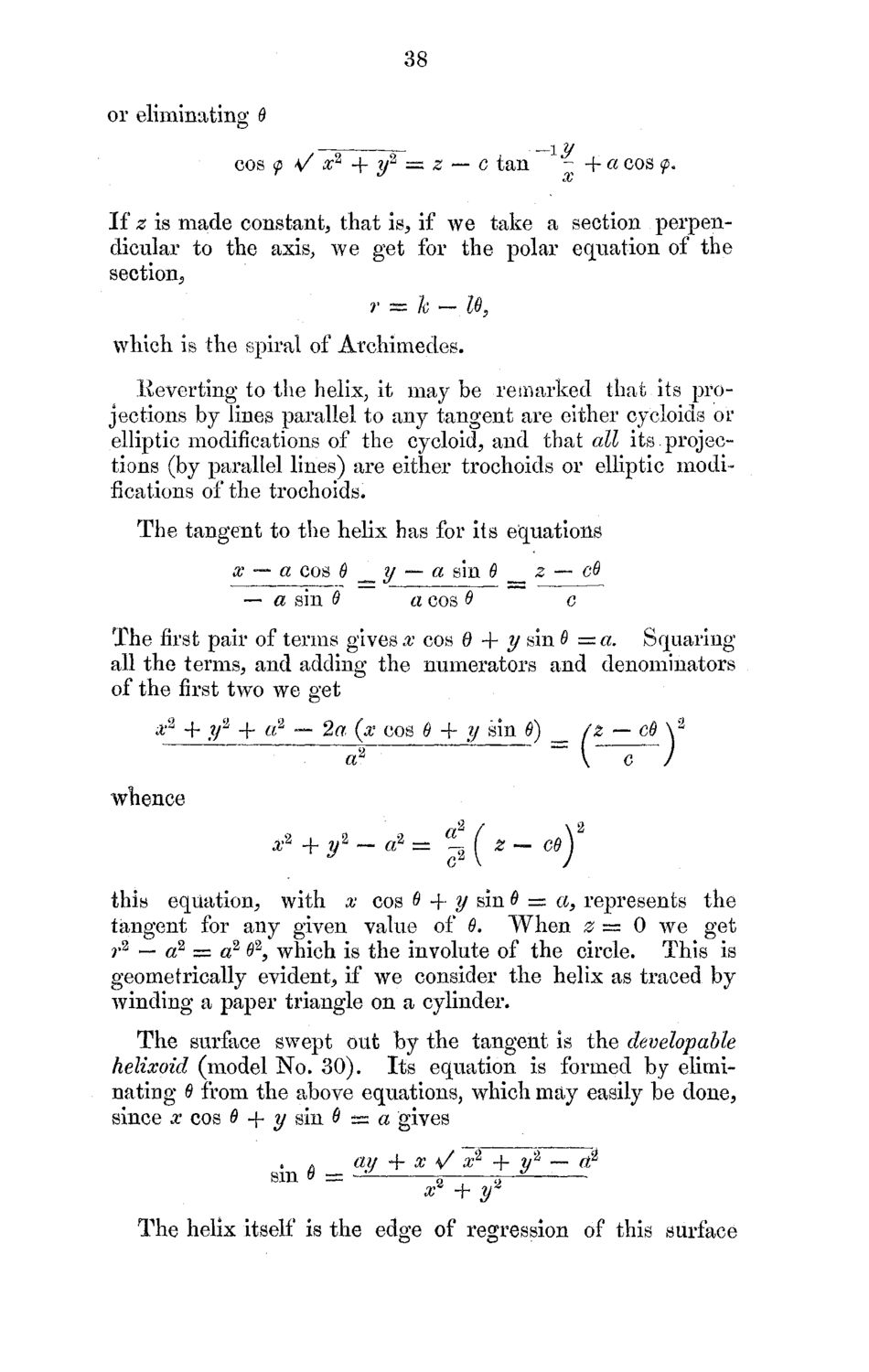| |
| |
Caption: Mathematical Models Catalog of a Collection of Models of Ruled Surfaces
This is a reduced-resolution page image for fast online browsing.

EXTRACTED TEXT FROM PAGE:
38 or eliminating 9 cos <p \/ x2 -\- y2 — z — c tan -; + a cos <p. If z is made constant, that is, if we take a section perpendicular to the axis, w e get for the polar equation of the section, r = k — IB, which is the spiral of Archimedes. Reverting to the helix, it may be remarked that its projections by lines parallel to any tangent are either cycloids or elliptic modifications of the cycloid, and that all its.projections (by parallel lines) are either trochoids or elliptic modifications of the trochoids. The tangent to the helix has for its equations x — a cos 9 _ y — a sin 9 __ z — c9 — a sin 0 a cos 9 c The first pair of terms gives x cos 0 + y sin 6 = a. Squaring all the terms, and adding the numerators and denominators of thefirsttwo w e get #2 4- y2 + a2 — 2a (x cos 9 + y sin 9) __ fz — c9 \2 whence + y* - < 2 = * 72 / J ( *X2 <*) this equation, with # cos 5 + y sin 0 = a, represents the tangent for any given value of 9. W h e n 0 = 0 w e get r2 — a2 = a2 02, which is the involute of the circle. This is geometrically evident, if w e consider the helix as traced by winding a paper triangle on a cylinder. The surface swept out by the tangent is the developable helixoid (model N o . 30). Its equation is formed by eliminating 6 from the above equations, which m a y easily be done, since x cos 6 + y sin 9 — a gives . A ay 4- x sf x2 + y2 sin 9 — -^ •?— x2 + T h e helix itself is the edge of regression of this surface
| |